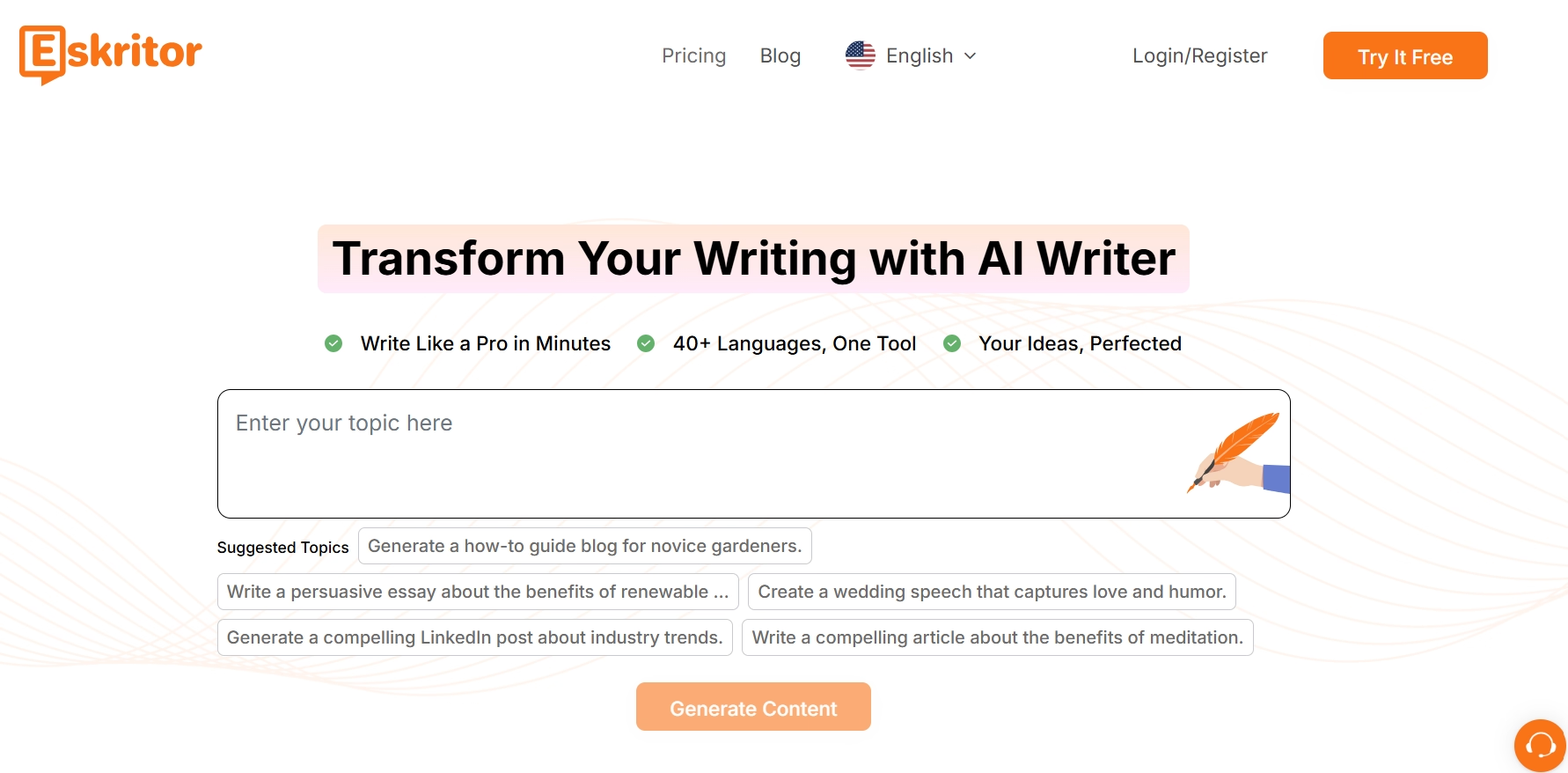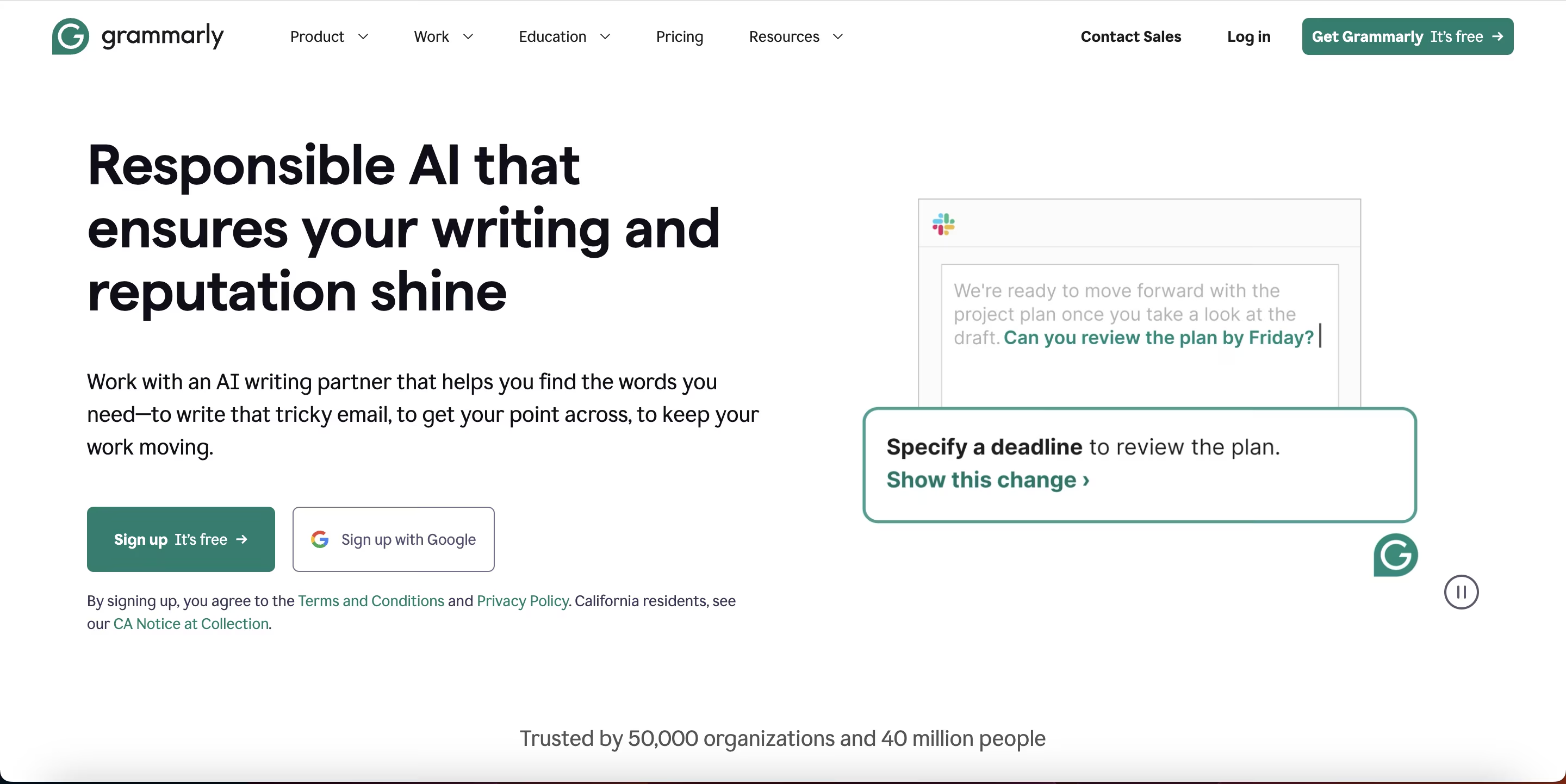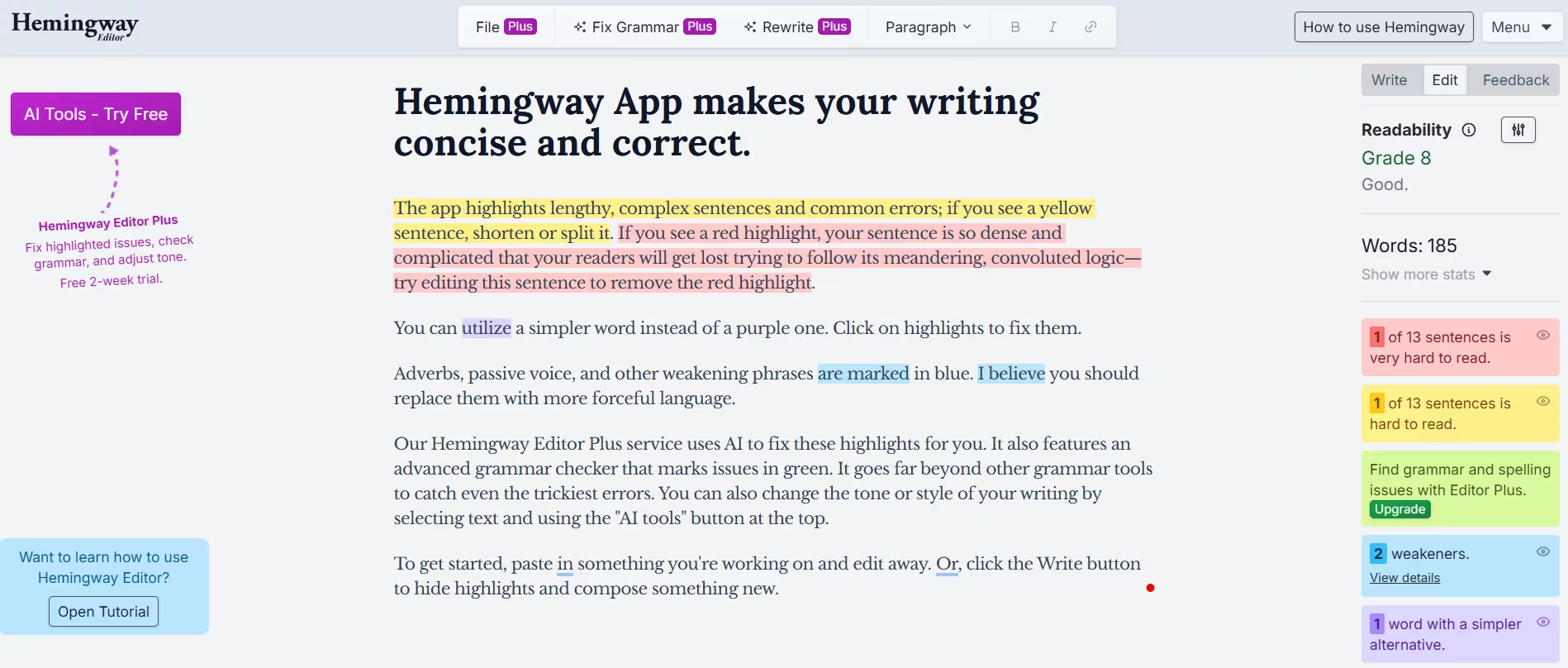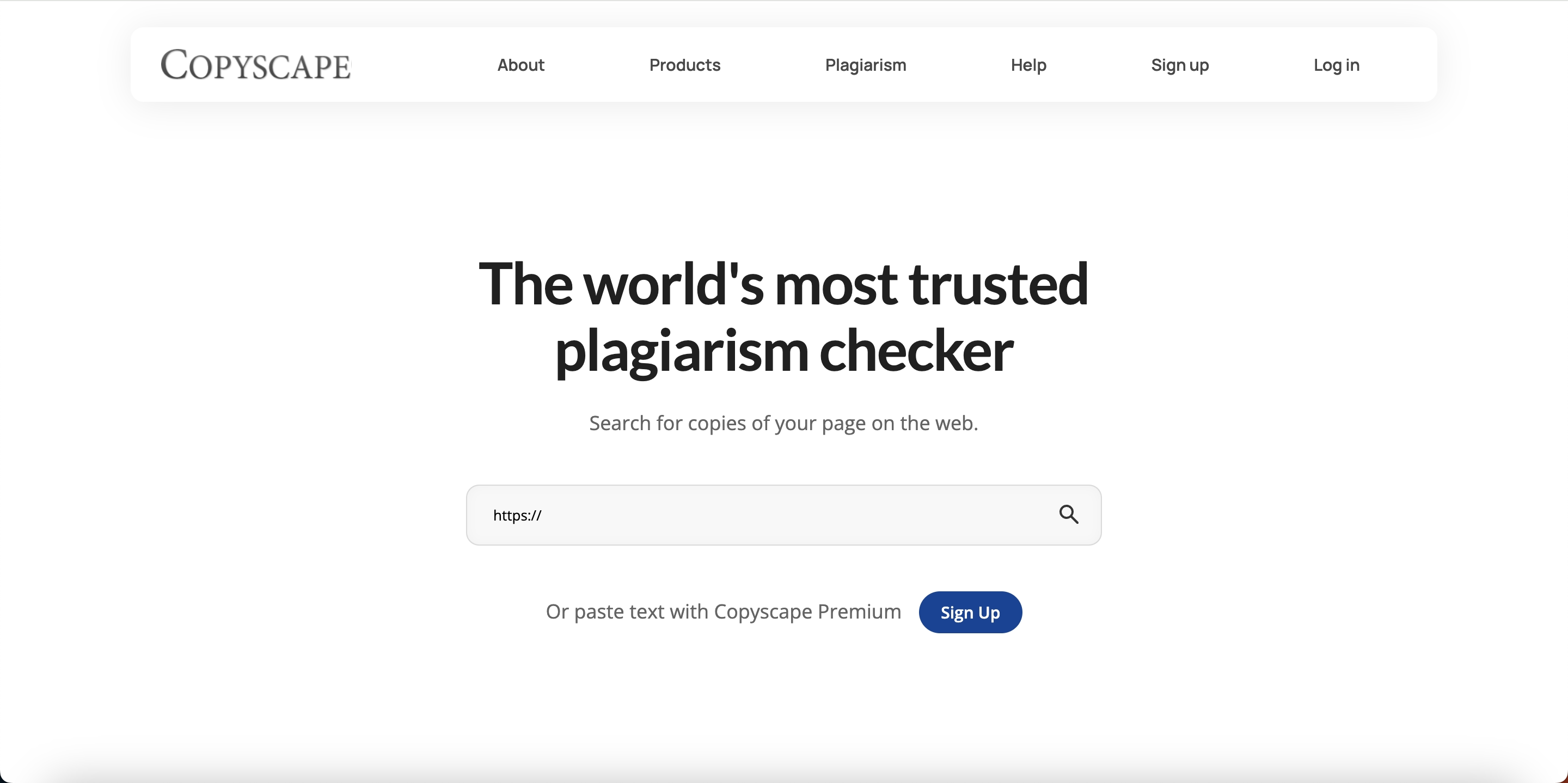
How to Perform a Content Audit: A Step-by-Step Guide
Generate the Best Content with AI in Seconds
Generate the Best Content with AI in Seconds
Having only a data collection is not enough to perform a content audit. Although quality content is one of the driving factors of content audit, there is a holistic approach to performing it. For example, you may need to do a website content analysis in a content inventory.
In this guide, you will delve deeper into how to perform a content audit. Understand what you may require to perform an audio, such as a content audit template. You can keep a content audit checklist to gather all the analytical and content quality assessment tools.
Understanding Content Audits
A content audit is an orderly record of all content available on a particular site. It allows for the checking and purpose of existing content for optimal growth. After collecting all the content, one may examine the gaps that require attention and formulate an action plan.
Definition and Importance
According to Ahrefs, 53% of search results are organic, emphasizing the value of non-paid listings for visibility and traffic. A content audit reviews a website’s content, including its performance and cataloging all available content. Businesses that post online and have a content marketing plan will get the most use out of their content through a detailed SWOT analysis. Content audits can improve existing content and help identify poor content on the website.
Types of Content Audits
Everything in the content needs to be reviewed as part of the audit. It can be a blog post on your website, a category page, and even a social media post.
- Specialized Audit: This is done using a small set of evaluation criteria, which may include accuracy, structure, or analytics. These factors are weighted against the primary objective. For instance, specialized audits are used whenever you need to quickly improve a specific part of your website, such as user-friendliness.
- Full Audit: This is done when the entire range of audit criteria and metrics is applied to every piece of your requirements. This is very useful when you do not know what to do first and your site is small.
- Sample Audit: This method gives you a random understanding of the quality of your content. It is used when you want to evaluate a large quantity of content quickly, such as a large website.
- Continue Audit: A continuous audit includes reporting at regular intervals. It is used when you frequently add content to your website and need to ensure it is checked. Those responsible for the audit are automatically notified when content is due to be reviewed.
Benefits of Regular Content Auditing
The goal of a content audit is to identify gaps in your content. This helps you to adjust your content strategy based on what you find and your site audit. This website content assessment facilitates the foundation for identifying what is effective and what harms your website.
- Better SEO: Content audit tools help catalog each site's tags, images, and word counts. Semrush says traffic is a key content marketing performance metric for 66% of businesses using AI.
- Enhanced Visibility: Identifying what to rank for is crucial to increasing your search engine rankings. Solid organic search rankings are achieved only when a well-defined plan is in place that utilizes keywords accurately.
- Better Content: Your website will receive repeat traffic based on the content and quality of the information you provide. Reviewing content will enable you to determine which type is appealing to the audience and search engine bots.
- Maximized Conversion Rates: Effective strategic planning, analysis, and an audit can increase ROIs. Your performance returns are directly affected by your content effectiveness.
When to Conduct a Content Audit
To conduct a comprehensive content audit, start by elucidating your objectives. Then, determine your content assets and what you want to change. Finally, decide on the scope of the audit strategy and what metrics you will analyze closely. Use an action-oriented approach and track your progress throughout the audit. A content audit should be conducted two to four times each year.

Step-by-Step Guide Content Audit Process
Organizing your content concisely will allow you to evaluate your website in a much more holistic way. Gaps will be prominent and can be fixed to boost SEO and engagement. As per Demand Sage, with 68% of online experiences starting with a search engine, SEO is the key to online visibility.
Step 1: Defining Audit Goals and Scope
A specific audit scope targets several risks and problems in an organization. Specific risk evaluation concentrates on an area with high chances of risk exposure. This approach also guarantees that the audit for risk is covered and effective. It is always more manageable and less expensive to fix a problem when the risk is identified early. Concentrated audit scopes aid in revealing issues much earlier in the process.
Step 2: Creating Content Inventory
During a content inventory, a person reviews website pages and notes every piece of published content. Some teams keep track of live URLs, page titles, published dates, etc. This helps identify existing pages on your website and allows you to identify gaps for new content creation and publishing. Some teams conduct this inventory in more detail, reporting on media assets, internal links, categories, tags, etc. Focus on the data that is most relevant to achieving your goals.
Step 3: Gathering Performance Data
After identifying the structure and goals of your site, you can collect data to help identify development gaps. Remember to consider organic traffic, pageviews, and session duration key metrics. In addition, CTR and search rankings should be used to evaluate the visibility of the content. Incoming links are important, too; when analyzing them, you can evaluate the credibility of the sources. Those insights will help you refine your content strategy.
Step 4: Conducting Content Analysis
Older content should be reviewed and updated to improve ranking potential. All content should be relevant to the topic and aligned with the goals and high-quality standards of your brand. Following these steps, you can perform a content audit, implementing all the tools and strategies. Your plan will be refined, and the potency of your content will be maximized.
Step 5: Identifying Content Gaps
A content audit allows you to recognize gaps in your current material. By filling these gaps with new content, you can ensure that your site covers all topics relevant to your target audience. This allows you to be at the forefront and satisfy the needs of your audience over time. Understanding what content performs the best will also give you insight into what themes matter most to your audience, allowing you to structure your future content strategy around them.
Step 6: Making Action-Based Decisions
A content audit ensures alignment with business goals and marketing strategies. It supports sales, brand awareness, and information updates. Constant auditing ensures that the content serves its purpose, which is crucial for maximizing ROI from content marketing.
Content Audit Tools Overview
Google Analytics is an effective tool for auditing websites. It can gather vast information about your site. Many other templates for auditing website content make use of Google Analytics. Another tool that will help you is the Screaming Frog SEO spider. It crawls through subfolders and entire websites to compile important SEO data for each webpage.
SEMrush is a paid tool that helps you gather these insights more quickly. With SEMrush Content Analyzer, auditing your content for an entire account or individual subdomain is easier.
Content Quality Assessment Tools
As with any quality assessment where feasibility is measured, this ensures that the content presented is comprehensible. It also flags any readability problems, grammar mistakes, and gaps in SEO to enhance effectiveness.
- Eskritor: AI-powered writing tool that creates, optimizes, and refines content in multiple languages.
- Grammarly: Improves grammar, clarity, and engagement but may alter the original tone.
- Hemingway: Enhances readability by simplifying complex sentences but can be too rigid.
- CoSchedule Headline Studio: Analyzes and scores headlines but lacks complete content optimization.
- Copyscape: Detects plagiarism effectively but requires a paid plan for advanced features.

1. Eskritor
You can use Eskritor AI Writer to create, optimize, and edit any text into well-written pieces. From business proposals to blog posts, it generates everything in seconds without compromising quality. The AI handles all processes with utmost integrity so you can save time on drafting, editing, and formatting.
Eskritor also features anti-plagiarism technology that ensures unique results tailored for you. Eskritor provides the precision you need through simple follow-up questions that maximize optimization and content refinement for your writing demands. You can achieve the dependent alterations while keeping your writing voice intact.
Key Features
- Multilingual: Eskritor can write content in 40+ Languages. Creating, editing, enhancing, or translating your content into any language is easy with Eskritor.
- Personalized Follow-Up Questions: Eskritor engages you with simple, targeted follow-up questions to refine and optimize your content.
- Specialized AI Writers: According to HubSpot, 49% of email marketers believe that GenAI helps them better personalize campaigns. Eskritor can write product launch assessments, press releases, Google Ads copy, AI headlines, and more.

2. Grammarly
With over a million users, Grammarly has become a leading tool for improving any piece of work, and for good reason. Grammarly scores text for correctness, clarity, engagement, and delivery while providing suggestions for improvement. You edit work according to your style guide in Grammarly. However, it may over-rely on automated suggestions, sometimes altering the tone or intent of the original writing.

3. Hemingway
Content marketers often utilize the Hemingway App with Grammarly to help them with content marketing. It allows editing and rephrasing content to increase conciseness and clarity. The Hemingway app significantly enhances text clarity, enabling the writer to focus on areas that may need fixing by color-coding them. On the downside, it can be too rigid, often oversimplifying complex sentences and reducing stylistic nuance in writing.

4. CoSchedule Headline Studio
CoSchedule Headline Studio analyzes particular headlines. This tool utilizes precise measures established during research into what features attract the most attention. Rest assured, it does all the work to determine the score, which is out of 100. However, it focuses only on headlines, limiting its usefulness for overall content optimization and in-depth SEO analysis.

5. Copyscape
Copyscape is straightforward and affordable regarding content tools and is necessary in any toolkit. Copyscape leaves no room for self-plagiarizing or plagiarizing others through manual detection methods and automatic Copysentry alerts. However, you need a paid plan for comprehensive plagiarism detection and advanced functionality.
Best Practices for Content Auditing
A content audit should be conducted after any restructuring of websites. Doing so will help assess whether the updated content fits the goal of the newly designed website. Also, content audits should be included as a thread for strategy performance reviews.
- Regular Audit Schedule: Conduct audits yearly, ideally during a redesign, to maintain content quality and relevance.
- Documentation Methods: Use spreadsheets for cataloging and slide decks for visualizing content audit insights.
- Team Collaboration: For accuracy and effectiveness, involve content creators, SEO experts, and subject matter specialists.
- Quality Control Measures: Ensure error-free, engaging, and relevant content to boost user experience and conversion rates.
Regular Audit Schedule
Regular audits are a practical step toward maintaining quality content and relevance in the long run. Remembering that a content audit helps improve the digital footprint of a brand over time is essential. A single-hour audit at least once every year, ideally during a redesign, is a good starting point.
Documentation Methods
With the aim and scope of the audit set, the recommended tools to document your findings may differ. For instance, a spreadsheet is a good tool to catalog the content that will be part of the audit. Each content item can be cataloged with additional information, such as its relevance or importance.
Team Collaboration
A content creator's end goal is to revise and update the content. Their primary motivation revolves around the content matching brand standards and appealing to the audience. SEO checks require SEO experts to be involved when performing the content audit. Participants or Subject matter experts are equally important as they ensure accuracy, particularly in technical or specific subject areas.
Quality Control Measures
Reputation management and content quality control significantly enhance the digital presence of the organization. By ensuring that content is error-free, developed engagingly, and relevant, the user experience increases satisfaction, on-site spending, and conversion rates.
Conclusion
Every business must conduct content audits frequently to maintain a high-performing website. Content performance metrics help companies identify areas for improvement and enhance their SEO content audit processes. Eskritor simplifies this complex process and improves content quality assessment by editing, optimizing, and translating content into various languages.
It ensures perfect content gap analysis, increasing engagement and visibility. A well-constructed content audit can foster business decision-making and help maintain quality standards. Using the proper tools like Eskritor, these companies can address SEO issues, enhance traffic, upgrade their content relevance, and improve their position in the digital world.
Frequently Asked Questions
Audit documentation methods include spreadsheets, slide decks, and specialized content audit tools for tracking, analyzing, and visualizing findings.
Popular SEO audit tools for tracking content performance and search rankings include Google Analytics, SEMrush, Ahrefs, and Screaming Frog.
A content audit report summarizes content performance metrics, gaps, SEO insights, and action plans to optimize website content.
A content audit includes blog posts, landing pages, product descriptions, videos, images, social media posts, and other digital assets.





 location
location